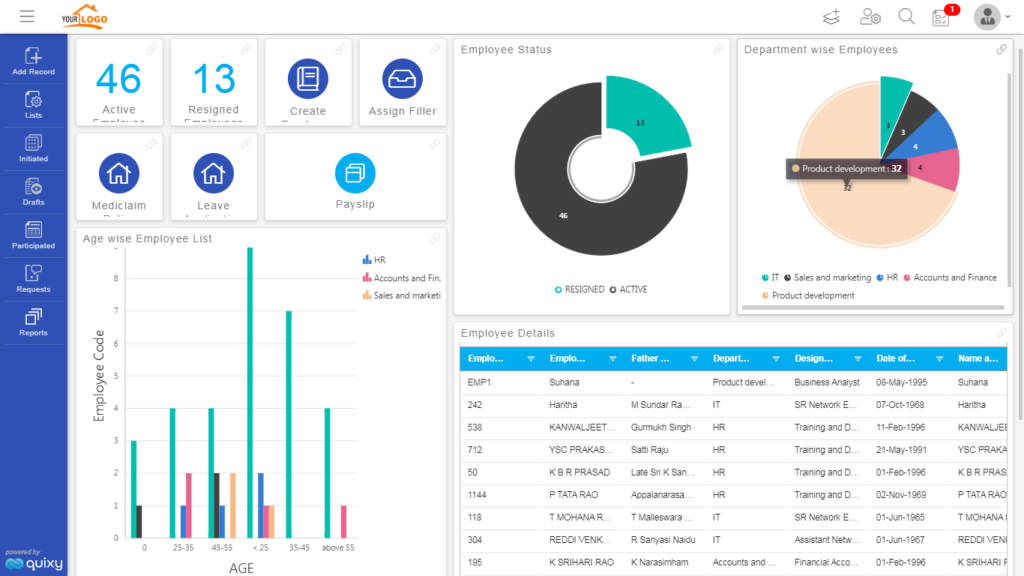Discover How Scalable Data Sources Can Be Utilized Without Coding to Boost Your Company Procedures
In today's busy organization setting, the capability to take care of and evaluate information efficiently is paramount. Scalable data sources, particularly when coupled with no-code options, offer a transformative strategy that empowers non-technical individuals to simplify operations. By utilizing tools that call for no coding experience, organizations can improve their functional capabilities while reducing dependence on IT sources. Nonetheless, the real concern depends on recognizing how these options can be customized to specific company requirements and what possible hurdles may develop in their execution. Discovering these facets can illuminate the path to operational excellence.
Recognizing Scalable Databases
Scalable databases are important for modern-day service operations, enabling companies to successfully handle boosting quantities of data without compromising efficiency. These data sources are designed to adjust and expand to the changing needs of a company, making sure that they can handle larger datasets and more complicated questions as organizational requirements progress.
Recognizing scalable data sources involves acknowledging their two primary types: upright scaling and straight scaling. Vertical scaling, or "scaling up," includes including more power (CPU, RAM) to an existing server to improve efficiency. Alternatively, horizontal scaling, or "scaling out," involves adding much more servers to distribute the load, which often results in better adaptability and fault resistance.
An additional essential element is the design of scalable data sources, which can be either non-relational or relational. Relational data sources, such as MySQL and PostgreSQL, are structured and make use of SQL for queries, while non-relational data sources, like MongoDB and Cassandra, provide more versatility with unstructured data.
Eventually, understanding scalable databases is essential for businesses aiming to take advantage of data as a calculated possession, allowing them to stay affordable in a significantly data-driven setting.

Benefits of No-Code Solutions
Unlocking the possibility of no-code remedies empowers services to streamline operations and boost productivity without the demand for comprehensive programs expertise. These platforms enable non-technical individuals to produce, change, and manage databases easily, hence equalizing access to innovation throughout groups.
One of the primary benefits of no-code options is their speed of application. Organizations can quickly deploy applications and automate processes, dramatically reducing the moment spent on development cycles. This agility enables organizations to respond immediately to market changes and client requirements, promoting an affordable side.
In addition, no-code platforms minimize reliance on IT departments for everyday tasks, allowing technical teams to concentrate on more complex projects that require specialized skills. This change not only maximizes source appropriation yet additionally advertises technology within the company.
Cost-effectiveness is an additional benefit, as no-code options can reduce development and upkeep expenses. By decreasing the demand for coding competence, business can harness the capabilities of their existing labor force without the expenses of employing extra personnel.
Popular No-Code Database Tools
The surge of no-code remedies has actually led to the emergence of different database devices that satisfy businesses seeking effectiveness and ease of access. These devices equip individuals with restricted he has a good point technical knowledge to develop, manage, and adjust databases flawlessly.

Caspio stands out for its capacity to develop internet applications without any type of coding. It allows companies to develop robust data sources and deploy applications swiftly, satisfying numerous sector needs. Knack offers powerful data and easy to use interfaces administration abilities, allowing companies to build browse this site custom applications tailored to their process.

Use Instances in Organization Operations
How can organizations take advantage of database devices to boost their procedures? Scalable databases give organizations with powerful abilities to manage and assess data without the demand for comprehensive coding knowledge. These tools can improve different business processes, eventually leading to improved performance and productivity.
One popular usage situation is customer relationship administration (CRM) Services can utilize scalable databases to track customer communications, choices, and feedback, making it possible for personalized interaction and far better service. By centralizing this info, groups can work together better and react to customer requirements in real-time.
One more significant application is inventory administration. Firms can utilize no-code data source tools to check supply levels, track deliveries, and forecast need. This ensures optimum inventory degrees, minimizes waste, and decreases stockouts.
In addition, job monitoring can benefit from scalable databases by permitting groups to handle tasks, target dates, and sources in a combined platform. With real-time updates and data visualization, task supervisors can make educated choices.
Beginning With Implementation
Applying scalable databases in company operations read what he said needs a structured strategy to ensure effective combination and use. The initial step is to conduct an extensive needs evaluation, identifying certain service requirements, data types, and expected development patterns. This fundamental understanding will certainly assist the choice of the suitable database solution.
Next, choose an user-friendly, no-code data source platform that lines up with your functional goals. no-code. Numerous modern-day services use user-friendly user interfaces, allowing non-technical individuals to take care of information properly. After choosing a platform, establish a clear data design that outlines just how information will be arranged, accessed, and preserved
Training is important; guarantee that employee are outfitted with the essential skills to use the data source. Think about providing tutorials or workshops to familiarize staff with the system's capabilities.
Verdict
In conclusion, the combination of scalable data sources through no-code services provides considerable advantages for business procedures. Eventually, leveraging these modern technologies can lead to enhanced productivity and operational performance, positioning companies for continual growth in an affordable landscape.
One popular no-code data source tool is Airtable, which incorporates the functionality of a spreadsheet with the power of a database.Just how can companies utilize data source tools to enhance their procedures? Services can use scalable data sources to track consumer interactions, choices, and comments, allowing tailored interaction and far better service.Implementing scalable data sources in company procedures calls for an organized approach to guarantee successful combination and usage.In final thought, the combination of scalable data sources through no-code options offers significant advantages for organization operations.